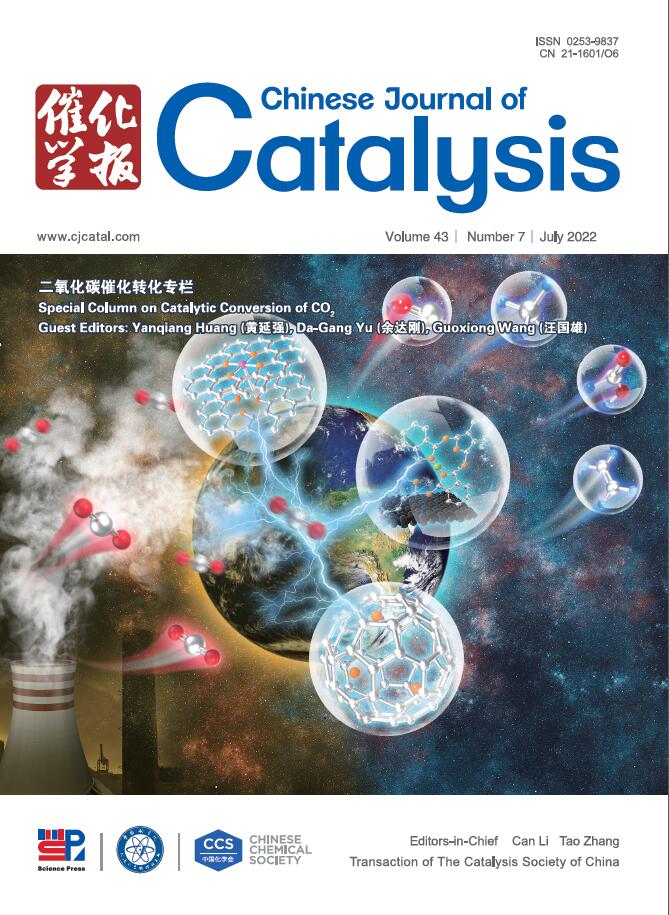The electronic interaction of encapsulating graphene layers with FeCo alloy promotes efficient CO2 Hydrogenation to light olefins
IF 15.7
1区 化学
Q1 CHEMISTRY, APPLIED
引用次数: 0
Abstract
ABSTRACT
CO2 hydrogenation to value-added light olefins (C2–4=) is crucial for the utilization and cycling of global carbon resource. Moderate CO2 activation and carbon chain growth ability are key factors for iron-based catalysts for efficient CO2 conversion to target C2–4= products. The electronic interaction and confinement effect of electron-deficient graphene inner surface on the active phase are effective to improve surface chemical properties and enhance the catalytic performance. Here, we report a core-shell FeCo alloy catalyst with graphene layers confinement prepared by a simple sol-gel method. The electron transfer from Fe species to curved graphene inner surface modifies the surface electronic structure of the active phase χ-(FexCo1–x)5C2 and improves CO2 adsorption capacity, enhancing the efficient conversion of CO2 and moderate C-C coupling. Therefore, the catalyst FeCoK@C exhibits C2–4= selectivity of 33.0% while maintaining high CO2 conversion of 52.0%. The high stability without obvious deactivation for over 100 h and unprecedented C2–4= space time yield (STY) up to 52.9 mmolCO2·g–1·h–1 demonstrate its potential for practical application. This work provides an efficient strategy for the development of high-performance CO2 hydrogenation catalysts.
求助全文
约1分钟内获得全文
求助全文
来源期刊

Chinese Journal of Catalysis
工程技术-工程:化工
CiteScore
25.80
自引率
10.30%
发文量
235
审稿时长
1.2 months
期刊介绍:
The journal covers a broad scope, encompassing new trends in catalysis for applications in energy production, environmental protection, and the preparation of materials, petroleum chemicals, and fine chemicals. It explores the scientific foundation for preparing and activating catalysts of commercial interest, emphasizing representative models.The focus includes spectroscopic methods for structural characterization, especially in situ techniques, as well as new theoretical methods with practical impact in catalysis and catalytic reactions.The journal delves into the relationship between homogeneous and heterogeneous catalysis and includes theoretical studies on the structure and reactivity of catalysts.Additionally, contributions on photocatalysis, biocatalysis, surface science, and catalysis-related chemical kinetics are welcomed.
文献相关原料
公司名称
产品信息
麦克林
Activated carbon
阿拉丁
Co(NO3)2·6H2O
 求助内容:
求助内容: 应助结果提醒方式:
应助结果提醒方式:


